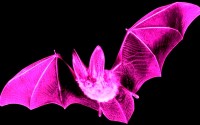Sound waves in an echoing wonder world
- Date
- 30 Dec 2012
- Start time
- 2:30 PM
- Venue
- Tempest Anderson Hall
- Speaker
- Ann Marks MBE

The YPS and YMT Christmas Family Lecture
Joint event by the Yorkshire Philosophical Society and York Museums Trust
Sound waves in an echoing wonder world
Ann Marks MBE, MSc, CPhys, FInstP Physics Education Consultant
Alice met many strange creatures in Wonderland. But fact is often stranger than fiction and in the real World there are creatures whose abilities to produce or detect sounds are amazing, as they exploit an astounding range of frequencies from infrasound to ultrasound. This is a far wider range than we can hear but small compared with the range of sounds that are used for research or practical applications.
In this lecture a pathway will be traced from the basic concepts of how sound travels to include reflection, resonance and Doppler shift, as the wonder world of sound, natural and man-made, which surrounds us, is explored.
Audience participation will be invited and very much encouraged in the numerous demonstrations throughout this illustrated Christmas lecture.
The YPS Christmas Family Lectures aim to be both entertaining and educational: suitable for all the family from 10 years and above.
Further Information
view Ann Marks’ profile at: http://www.amarks.co.uk/
A poster for this event can be downloaded here
Report
From infrasound to ultrasound, low frequency to high frequency, low pitch to high pitch – what and how do humans, birds, and whales hear? What else do sound waves convey?
Sound travels through any medium except a vacuum. Whales communicate over vast distances in water, using very low frequencies, as elephants can over land. Extraordinarily, pigeons navigate by sensing, as they fly, the Doppler effect in very long-wave, low-frequency earth waves caused by oceans, rivers, and other geographical features. In contrast, bats and some other animals and birds can hear high-frequency sound waves and detect their prey. Humans, whose hearing range is very restricted, hear neither.
Sound waves, pitch, and resonance were demonstrated using a variety of ordinary objects, and enthusiastic child volunteers. An oboe reed cut from a drinking straw produced some hilarity and plastic cups linked with string made a moderately successful bush telephone. To make it audible, a tiny musical instrument was attached to a resonant surface, a tin lid and then a table. Even electronic devices like ultrasound scanners and mobile phones depend on resonant or reflecting surfaces, but require computers to translate the resulting signals into an image or a sound.
Carole Smith